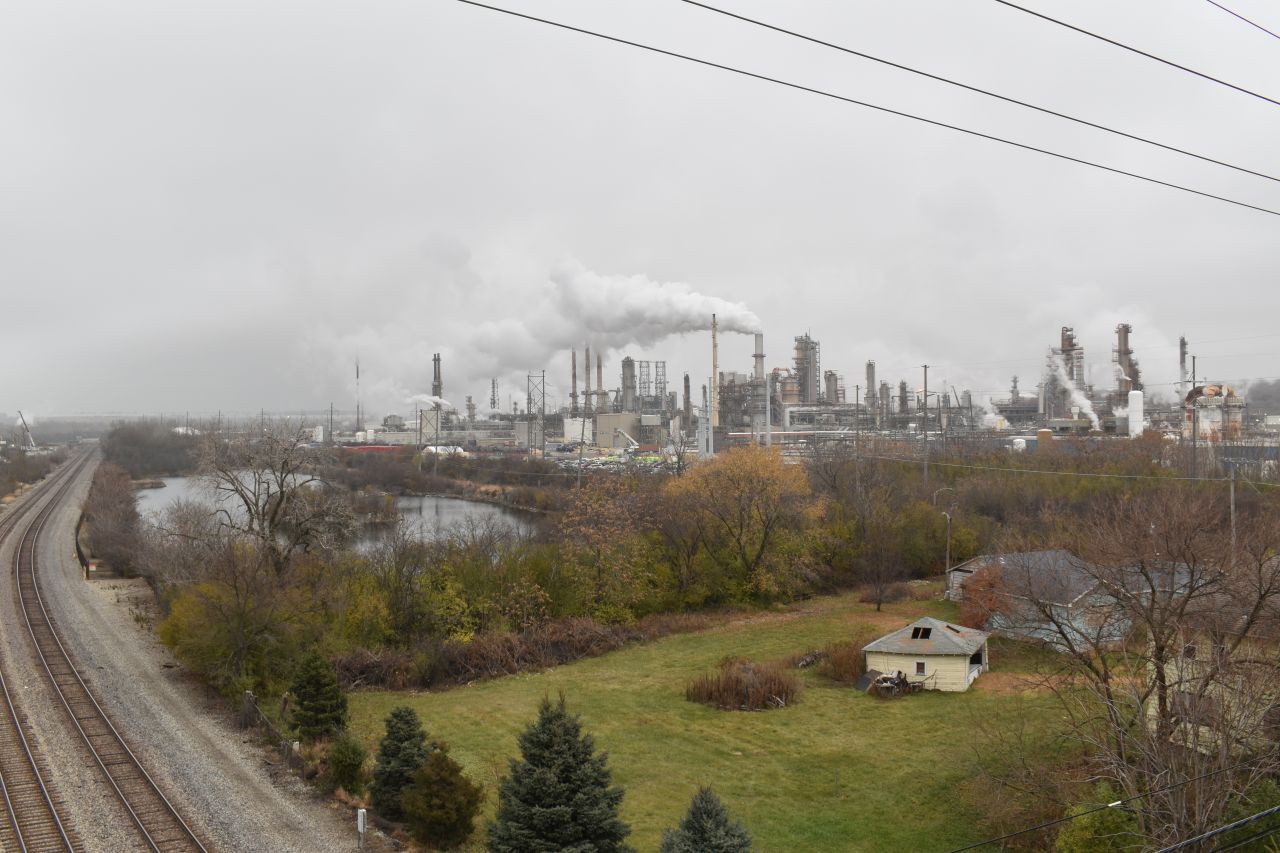Biden Administration offers drillers 67 million acres in the Gulf of Mexico – but industry sues over protections for whales

On Wednesday, the Biden Administration plans to offer leases for sale to oil and gas companies allowing drilling on 67 million acres in the Gulf of Mexico – a large swath of the outer continental shelf stretching from offshore of Texas to the Florida Panhandle.
The lease sale had been previously planned by the Trump Administration, then put on hold by President Biden. Then it was resurrected and mandated by law as part of Biden’s compromise with Senator Joe Manchin to pass Biden’s signature Inflation Reduction Act, which included subsidies for clean energy as well as requirements for more oil and gas leasing in the Gulf.
One might think that such a boost for more offshore drilling would draw praise from the oil and gas industry. But instead, the industry and the State of Louisiana are taking legal action because the Biden Administration plans to block drilling on a small portion of the underwater acres – about 8 percent – to protect a threatened species of whale.
In a lawsuit filed Aug. 24 in the Western District of Louisiana, Louisiana Attorney General Jeff Landry joined oil major Chevron and the American Petroleum Institute in arguing that that U.S. Department of the Interior improperly withdrew millions from oil and gas leasing in the Gulf of Mexico in an unexpected pivot meant to protect the critically endangered Rice’s whale.

In the lease sale, the department’s Bureau of Ocean Energy Management removed areas of the Gulf where the ocean floor ranges from 100 to 400 meters deep – habitat the whales use to hunt for fish and other prey. The area excluded from drilling accounts for about 6 million acres out of the 67.3 million currently acres up for auction to energy companies. In an Aug. 22 record of decision, federal officials stated the removal of the acreage “would help reduce potential impacts to [the] Rice’s whale, if present in the area.”
“Recent limited evidence shows that the Rice’s whale may be present in this area and removing the area reduces risks from new leasing,” the document states, adding that the restrictions would be in effect while regulators engaged in a “reinitiated consultation” with federal scientific agencies.
However, industry lawyers argued that the decision was “a wholly arbitrary and capricious departure from (the Department of Interior’s) prior position without adequate explanation for the change.”
“These actions place U.S. energy security in a more vulnerable position, put American jobs at risk, and jeopardize the strength of the Gulf Coast economy,” the American Petroleum Institute claimed in an Aug. 29 statement that avoided mentioning the Rice’s whale.


Records of past Gulf of Mexico lease sales show the industry often only places bids on a small fraction of the total acreage made available. In the most recent sale held in March, industry only bid on 1.6 million acres out of 73.3 million acres offered for leasing – 2.2 percent. A previous lease sale that offered 78.2 million acres ended with bids for only 1.7 million acres, also around 2.2 percent.
The dispute over the upcoming lease concerns a rare marine mammal whose habits and geographic range still include many mysteries. Although records of whales found in the Gulf of Mexico date back to logs kept by whalers as far back as the 1700s, they are not specific enough to be useful in detailing where the Rice’s whale might once have been found. Until only two years ago, the species had been considered a subspecies of the Bryde’s whale, a more common baleen whale found in warm waters all over the world.
That changed after 2019, when a dead Rice’s whale washed ashore in the Florida Everglades. Scientists linked its death to a hard piece of plastic found in its stomach. The specimen allowed the biologists to fully study the species’ physical traits and genetics, classifying it as its own species in a paper published in January 2021.


Scientists now estimate there are only about 51 Rice’s whales left in the wild, mostly concentrated in a core habitat area off the west coast of Florida. The area has been closed to oil and gas drilling since Congress passed a moratorium in 2006. Vicki Cornish, an energy policy analyst with the Marine Mammal Commission, said scientists cannot say for sure exactly why there are more whales in a part of the Gulf that is off-limits to oil and gas.
“The Gulf of Mexico is pretty heavily industrialized, and it's only that eastern part of the Gulf that doesn't really see a lot of ship traffic or a lot of oil and gas development,” Cornish said. “It’s just a quiet, sleepy part of the Gulf, and maybe that’s the area those whales prefer to be in.”
In 2022, scientists used audio sensors in Gulf waters to document calls from Rice’s whales in northern and western parts of the Gulf, areas they had not been known to frequent before then. The Department of the Interior referenced the study to justify the need to bar drilling in waters ranging from 100 to 400 meters deep.
Lance Garrison, a research fishery biologist for the National Marine Fisheries Service, said Rice’s whales tend to hunt for food in these areas where ocean floor drops steeply, where the whales dive into the darkness to snag prey fish in the bristly structures in their mouths known as baleen. One of the whale’s most important prey species is the silver rag driftfish, found all along the edge of the Outer Continental Shelf.

“When they encounter a school [of fish], they actually take a turn and do a circle around them and then lunge through the school,” Garrison said. “They usually feed maybe one or two lunges during a given dive, then they come up for air, and then they go back down. They basically do that all throughout the daylight hours.”
The behavior is remarkable, Garrison said, in part because it happens in pitch blackness. The whales cannot see their prey at those depths, and they do not have sonar like some other whale species.
“We don’t understand how they do it,” he said.
Threats to the tiny remaining population of Rice’s whales include loss of food and habitat, strikes by ships and boats, and sound disturbances caused by industry. Cornish said the loud booms caused by underwater airguns used in seismic testing for oil and gas are particularly disruptive because they interfere with the whales’ ability to communicate with one another. Noise from commercial boats and drilling associated with oil and gas production are not as loud as the seismic testing, she said.
“The oil and gas development itself is not directly impacting the Rice’s whale,” Cornish said. “Except when there’s an oil spill, of course – and that happens all the time, unfortunately, in the Gulf.”
The industry’s lawsuit over whale protections is the latest phase of a long-running battle between oil and gas interests and environmental and conservation organizations intent on curtailing drilling in the Gulf of Mexico. Offshore drilling in the Gulf of Mexico only accounts for approximately 15 percent of total U.S. oil production and 5 percent of natural gas production. But the Gulf holds most of the U.S.’s total offshore oil reserves – 4.7 billion barrels. The Gulf is also believed to hold 6.1 trillion cubic feet of untapped natural gas.
Natural gas production in the Gulf has steadily declined over the past four decades, offset by increased gas production on land. A 2018 U.S. Energy Administration (EIA) report on the decline stated that “the technology and expertise required to produce oil and natural gas from the seabed is expensive and specialized, and costs of production platforms can often exceed one billion dollars.”
“With the growth in exploration and production activities in shale gas and tight oil formations, onshore drilling became more economic relative to offshore drilling,” the EIA report states. Most gas produced in the Gulf currently comes from wells primarily drilled for oil, according to the EIA, and newer wells have tended to be more oil-rich.
Under the Trump Administration, oil production in the Gulf continued a steep increase that began under previous President Barack Obama, slowing only in 2020 during the COVID-19 pandemic outbreak. Trump in 2019 rolled back offshore safety regulations meant to prevent spills after the Deepwater Horizon disaster in 2010. Though Trump banned drilling off the Atlantic Coast of Florida, Georgia, and South Carolina, the administration’s 2017-2022 leasing plan called for 10 rounds of leases in the Gulf of Mexico.
After taking office in January 2021, President Joe Biden paused drilling in the Gulf until the completion of a review of the federal government’s programs of oil and gas leasing in public lands and waters. That led the Department of the Interior to cancel the eighth of the 10 leases, even though the industry had already bid $200 million for 308 tracts covering 1.7 million acres.
However, buried in the Inflation Reduction Act that Congress passed in August 2022 were provisions requiring the Department of the Interior to restart oil and gas leasing in the Gulf – namely, holding the remaining three of the 10 leases in the Trump Administration’s plan.
The legislation required the Department of the Interior to accept the winning bids for the eighth lease. The agency then held the ninth lease in March, for which companies bid $310 million for 313 tracts covering 1.6 million acres of the Gulf.
The Inflation Reduction Act stated that the tenth and final lease – Lease Sale 261 – would have to be carried out by Sept. 30, 2023. The federal government’s preparations for the lease sale included a January 2023 supplemental environmental impact statement that did not propose any new protections for the whales outside of the already-protected area.
That changed when the final leasing decision came out in August. According to the industry plaintiffs, the decision represents a “180-degree turn” in policy towards whale protections compared to the Department of Interior’s prior stance. The industry’s lawyers tie the shift to a series of lawsuits filed by environmental groups meant to force the department to better consider protections for Rice’s whale and other Gulf species under the Endangered Species Act.
Cornish thinks Rice’s whales could avoid extinction and enjoy an increase in their numbers if humans can keep their disturbance of the species and its habitat to a minimum.
“If we are mindful and we just cut back on some of the things we do, we could give them a fighting chance,” Cornish said. “If we ignore them and do business as usual, we might continue to see their numbers dwindle down to nothing.”















